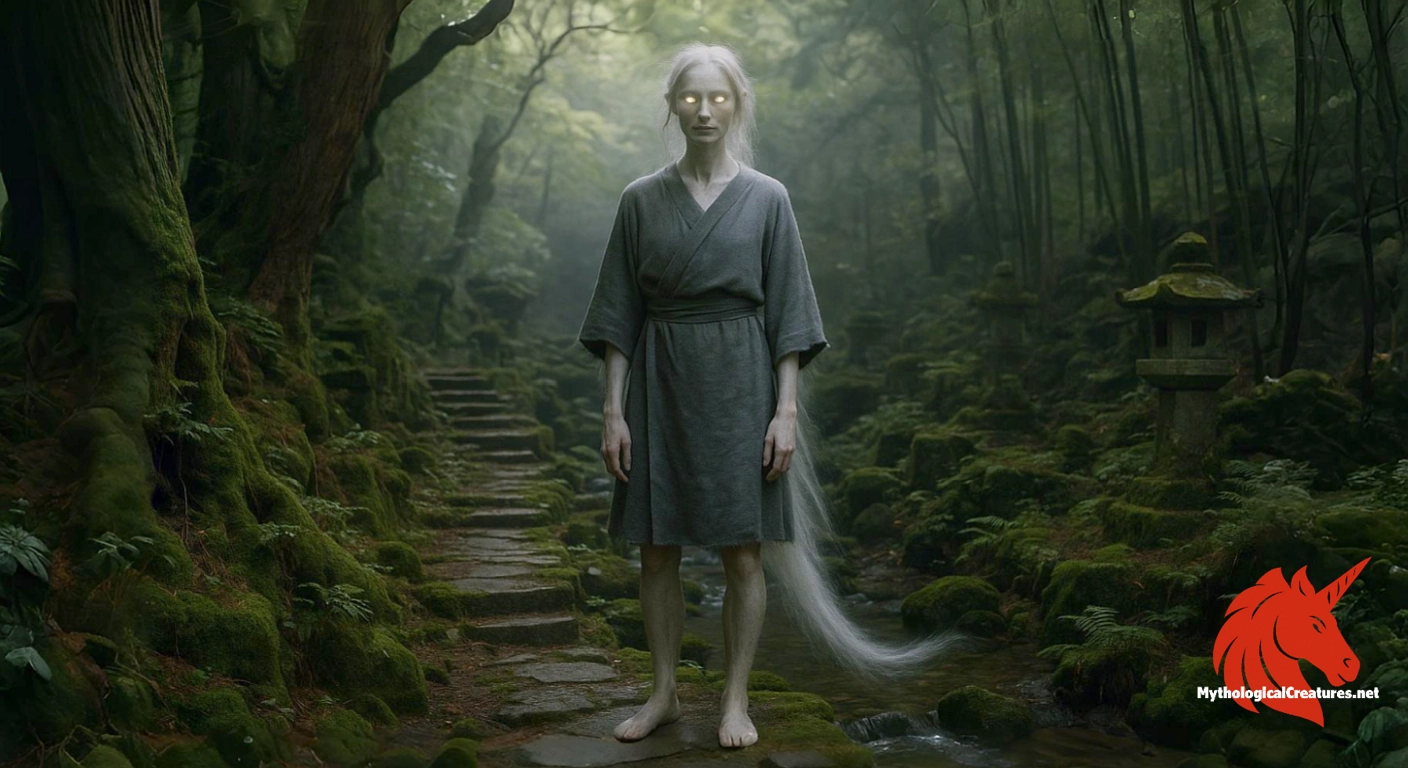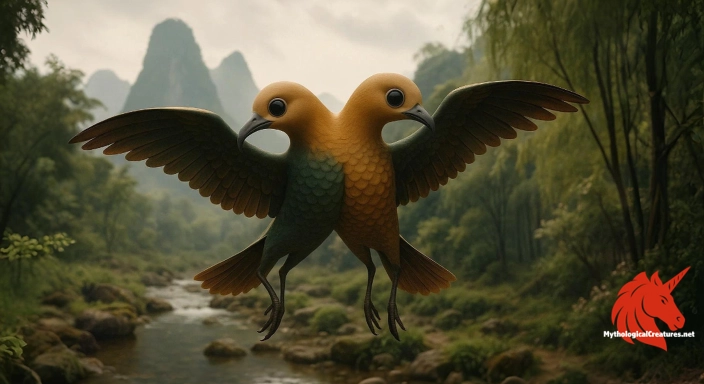Obake: Obake are a class of Japanese yōkai renowned for their transformative abilities.

Obake
Obake - Obake are central to Japanese cultural narratives as embodiments of change and transformation, blurring the boundary between the supernatural and the mundane.
Origins & First Encounters
Obake are enigmatic entities in Japanese folklore that encapsulate the mysterious art of transformation. Their legends have been nurtured over centuries, emerging from a rich tapestry of animistic beliefs and Shinto practices. Many of these supernatural beings were not originally ghosts in the strict sense, but living entities or even inanimate objects that undergo a curious metamorphosis. They capture an ephemeral quality, appearing briefly in unexpected forms that can be both beguiling and unsettling. By transcending the normal confines of physical identity, obake symbolise the power of change itself. Their origin stories are interwoven with everyday life, suggesting that even the most mundane things may harbour secret, transformative energies. Traditional narratives often depict them as both playful tricksters and ominous warnings, reflecting the dual nature of the spirit world. Early mentions in oral traditions and ancient texts highlight a deep cultural connection between the natural and supernatural realms. Over time, the lore of obake has served to remind people of the impermanence of life and the ever-shifting boundaries between the ordinary and the extraordinary. In essence, these creatures invite reflection on the fluidity of existence and the hidden surprises of the everyday world.
Source Texts & Tale Variants
Obake have long been a fixture in classical Japanese literature and art, appearing in various compendiums of supernatural lore. Early manuscripts and folklore anthologies preserve a range of narratives that bring these shape-shifters to life through vivid storytelling. Visual depictions, often found in renowned works such as those by Toriyama Sekien, have been instrumental in shaping the popular image of obake. These artistic representations offer a window into the imaginative world where household objects and animals transform into something beyond mortal understanding. The evolution of obake legends is further enriched by regional folktales that explore both light-hearted mischief and darker, more foreboding encounters. Oral traditions have allowed storytellers to adapt and reinterpret these beings, injecting new layers of complexity into the mythos over generations. Certain texts describe specific transformations linked to objects long cherished by families, known as tsukumogami, while others introduce animal forms like the kitsune and bakeneko. This diversity in storytelling has created a vibrant spectrum of obake narratives, each reflecting local customs and spiritual beliefs. As the myth advanced alongside the shifting cultural landscape, new variants emerged that emphasised different aspects of transformation and identity. The enduring appeal of these sources lies in their ability to merge the mundane with the miraculous, highlighting the unpredictable nature of existence.
Form & Powers
The physical appearance of obake is as fluid and variable as the ideas they represent, with countless forms recorded in folklore. Many accounts describe them as possessing features that defy the laws of nature, such as an extra eye or a surreal, faceless guise that challenges human perception. Their forms can range from subtly distorted human shapes to grotesquely exaggerated animal figures, each reflecting a transient phase of transformation. Obake that originate from inanimate objects often retain hints of their former nature, showing peculiar marks like weathered textures or the faint outline of their original design. Certain representations evoke images of slender, elongated limbs, while others present rounded, ambiguous contours that merge with the shadows. The interplay of light and darkness in these depictions often emphasises their eerie luminescence and spectral quality. Artists have portrayed them in a manner that balances beauty with the uncanny, sometimes capturing the moment before a complete metamorphosis occurs. Their size can vary greatly, making it difficult to pin down a single standard of measurement, as their dimensions are as mutable as their forms. Every detail, from the subtle shifts in colour to the fleeting distortions in shape, serves as a reminder of the obake’s fundamental nature—everchanging, elusive, and infinitely intriguing.
Regional Faces
The interpretations of obake differ notably across various regions of Japan, reflecting local cultural nuances and historical influences. In the countryside, these creatures are often linked with household objects that, after decades of service, seemingly gain a mysterious life of their own. Such tsukumogami have become an integral part of local lore, celebrated in festivals and whispered about in rural communities. In urban settings, artists and storytellers have reimagined obake with a modern aesthetic, blending traditional motifs with contemporary sensibilities. Some areas focus on the more mischievous aspects of the legend, depicting obake as playful interlopers that disrupt everyday order with their sudden appearances. Conversely, other regions portray them as harbingers of misfortune, with their presence signalling impending change or warning of natural calamities. The geographical diversity in their portrayal further enriches the overall mythology, with each locality contributing its own unique symbolism to the creature’s legacy. Local customs, environmental factors, and historical events all colour the way obake are perceived, giving rise to a mosaic of interpretations. This regional diversity not only deepens the mystery surrounding obake but also reinforces their role as a universal symbol of transformation and the unforeseen in life.
Cultural Parallels
Obake occupy a fascinating niche in global mythology as beings that defy static identities through their continuous transformation. Their ability to shift shapes and identities draws interesting parallels with European legends of werewolves and other shapeshifters who embody a dual nature. Much like obake, many Western tales feature creatures that are not strictly malevolent but are driven by forces beyond human control, reflecting a deep-seated cultural fascination with metamorphosis. Similar spirits appear in various Asian mythologies as well, where the blending of human and animal characteristics underscores the fluid boundaries between nature and the supernatural. The role of obake resonates with trickster figures found in diverse cultures, from the capricious nature of certain Native American legends to the sly shapeshifters of African lore. These cross-cultural comparisons reveal a shared human tendency to explain sudden changes and ambiguities through the medium of myth. Just as obake challenge conventional perceptions through their mutable forms, other global creatures serve as allegories that highlight the transient and unpredictable aspects of life. The interplay of fear and admiration present in these narratives underscores a universal recognition of the unknown. In comparative literature, obake stand as a testament to how societies across the world have sought to encapsulate the ineffable qualities of change.
Legacy & Modern Evolution
The legacy of obake is a vivid illustration of how folklore can evolve over time while retaining its essential mystique. In historical art and literature, these figures were often portrayed as ghostly manifestations that symbolised nature’s unpredictable energy and the impermanence of life. Over the centuries, their image has expanded beyond ancient texts, finding a place in modern films, manga, anime, and even video games. Contemporary adaptations frequently blend the eerie with the whimsical, inviting audiences to engage with the obake as both a source of entertainment and deeper reflection on change. The transformation of obake in modern media underscores a vibrant cultural continuity, bridging traditional myth with modern creativity. Their depiction has been reshaped by digital art and CGI, casting them in new lights that echo their classic attributes while appealing to a new generation. Modern interpretations often imbue these creatures with symbolism pertinent to contemporary issues, such as identity, alienation, and the rapid pace of urbanisation. As a result, obake continue to serve as a potent metaphor for the ever-changing canvas of life. The evolution of their portrayal from mythic haunts to pop culture icons demonstrates the enduring power of folklore to adapt and inspire. Throughout it all, obake remain a captivating reminder of the delicate balance between the visible and the unseen in our world.
Interesting Fact
An intriguing aspect of obake is their fluid identity, which sometimes overlaps with other yōkai categories such as bakemono and yūrei, showcasing the rich and complex tapestry of Japanese supernatural lore.
Quick Creature Info
Features:
Our Mythic Legendary Rating:

Also Sometimes Known As:
Habitat:
Supernatural Powers:
Physical Attributes:
Abilities:
Behavior:
Weaknesses:
Lore:
Related Creatures, Tales or Lore
References
Discover Another Mythical Legend You May Not Have Heard Of?
Uncover the mysteries of ancient folklore and expand your knowledge of legendary beings from cultures around the world.
Dare to Meet the Biyiniao....
Mythical Disclaimer: The images and data on this site are derived from various historical and literary sources, but we have found that many myths often have multiple versions and interpretations across references, sometimes contradictory. As a result, these creature depictions are artistic interpretations—imaginative blends of folklore, legend, and a dash of AI guesswork. Because creature descriptions vary widely, our illustrations and accompanying information represent our best effort to honor mythology while bridging creative gaps. Enjoy these interpretations—just remember, we've done our best to respect the stories and validate available data, but in the realm of mythology, details often shift, imagination leads the way, and nothing is ever set in stone!
Curated by the Mythological Creatures Team (rev. May 2025)
